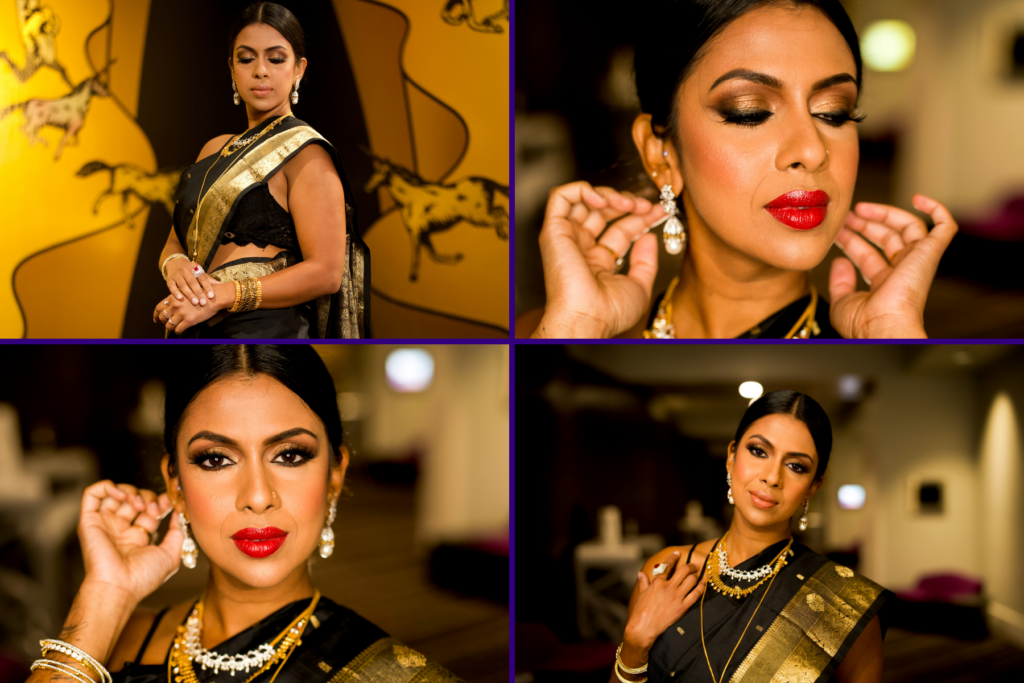
What an incredible week for America. The very first South Asian, Jamaican woman has joined the White House as the Vice President-elect. Although we are still battling the darkness of a global pandemic, there is light to be seen and I hope you are brave enough to welcome that light during Diwali this year.
Diwali, or Deepavali, is the Indian festival of lights celebrating the victory of light over darkness. Over the course of 5 days and 5 nights, homes are dressed in candles, marigolds, and sweets with the hope that the goddess, Lakshmi will visit bringing wealth and prosperity. Prior to the pandemic, many would gather for large parties filled with eating, dancing, and celebrating together with loved ones.
[Read Related: Edible Diwali Gifts: An Easy-to-Make Pistachio Rose Chocolate Bark this Festive Season]
There are still many ways to celebrate this auspicious occasion without the large gatherings, so I would love to share how I plan to celebrate Diwali, while creating a celebration that Lakshmi herself would attend.
1) Prepare sweets at home

Packaged Diwali sweets are loaded with sugar and ghee, and although they are tasty they are not the best for you. Anyone with diabetes or pre-existing health conditions should stay far away from those sweets! Cooking at home gives you control over the amounts of sugar and fat being used, and you can adjust to your liking.
Prior to COVID, I was never into baking because I was afraid I’d blow up the kitchen. As I began practicing, I quickly appreciated how therapeutic the process was and how the finished product brought me so much joy.
A great resource for healthy and delicious recipes is Amy Chaplin’s book Whole Food Cooking Everyday. I love these recipes, they can be made vegan, gluten-free and are super delicious.
2) Plan your Diwali outfit

Regardless of your plans, grab your favorite outfit and get dolled up. It’s not often that we get to wear our lavish saris, so let’s take advantage of the Diwali holiday and put it on. Need some inspiration? I love this beautiful black and gold sari, which you can purchase from any online Indian boutique.
And, don’t forget your makeup! Set some time aside to really do your makeup in a way that makes you feel and look great. My makeup artist, Raman Brar, dolled me up for a smokey makeup look with a dramatic red lip:
Foundation-Dior forever no.4
Concealer-Nars (biscuit) & forever 3wp
Eyes – Tom Ford eyeshadow pallet in Suspicion
Mascara – Lancome grandiose
Lipstick – Mac Ravishing & Dior rouge 999
Contour – Marc jacobs Deep 53 & Dior backstage contour palette
Eyebrows – Anastasia brow book in dark brown
Blush – Tom Ford sheer cheek duo & Shiseido OR 308
Highlighter – Tom Ford
Lashes – Koko lashes in koko
Glue – House of lashes
3) Invite friends and family to join you on Zoom

As South Asians, we’ve been using Skype and webcams long before the pandemic to keep in touch with family, so let’s do what we do best! Set up some calls with your friends to wish them a Happy Diwali, and even enjoy a beverage or snack with them while you’ve got them on the line. This is the best time to reconnect with family, and it is truly the purpose of all Indian holidays. Use this time to be with loved ones, and enjoy the moments you get to spend.
4) Create a bangin’ Bollywood playlist

There’s nothing better than jamming out to your favorite Bollywood bangers! And, what’s better than requesting songs? Being your own DJ. Start recollecting songs that get you on the dance floor, and throw those into your mix. Reach out to friends for suggestions, or check out existing playlists on Spotify. If you need some inspiration, you can check out Brown Girl’s Diwali playlist, ‘Diya Jale.’
5) Light some candles

Of course, the tradition is to light candles so spark ‘em up! Diwali literally means “the festival of lights,” so you cannot celebrate Diwali without adding more light to your home. Even if you get a small set of tea lights, that is all you need to get into the spirit of the holiday.
Regardless of how you choose to celebrate Diwali this year, remember that light always prevails over darkness. 2020 has tested many of us, but I hope that the victory of this election was proof that even in the dark times we can always find the light.
6) Pull out your fine jewelry or invest in one:

For this styled shoot I have partnered with Sampat Jewellers and got dolled up in the finest and timeless diamond jewelry. If you are married this is the time to wear your traditional mangalsutra with the saris and look festive. I enjoyed wearing the jewelry and finally getting dressed up after months of hanging out in pj’s.
These photos were taken at the W San Francisco, the home of the Pneumatic Dreamer Sculptor by Michael Stutz. This beautiful sleeping sculpture is lit from both the inside and the front, emphasizing the woven lattice aspect of the design. 2020 in general has been quite ambiguous in some ways, not knowing when this pandemic will end or not knowing when things will come back to normal. This sculpture demonstrates a quiet and private moment in a public space.
Creative Team:
Model Christina Davis
Photographer: Patrick Ward
Fine Jewelry: Sampat Jewellers
Hair and Makeup: Bridal Boutique by Raman Brar
Location: Hotel W San Francisco




